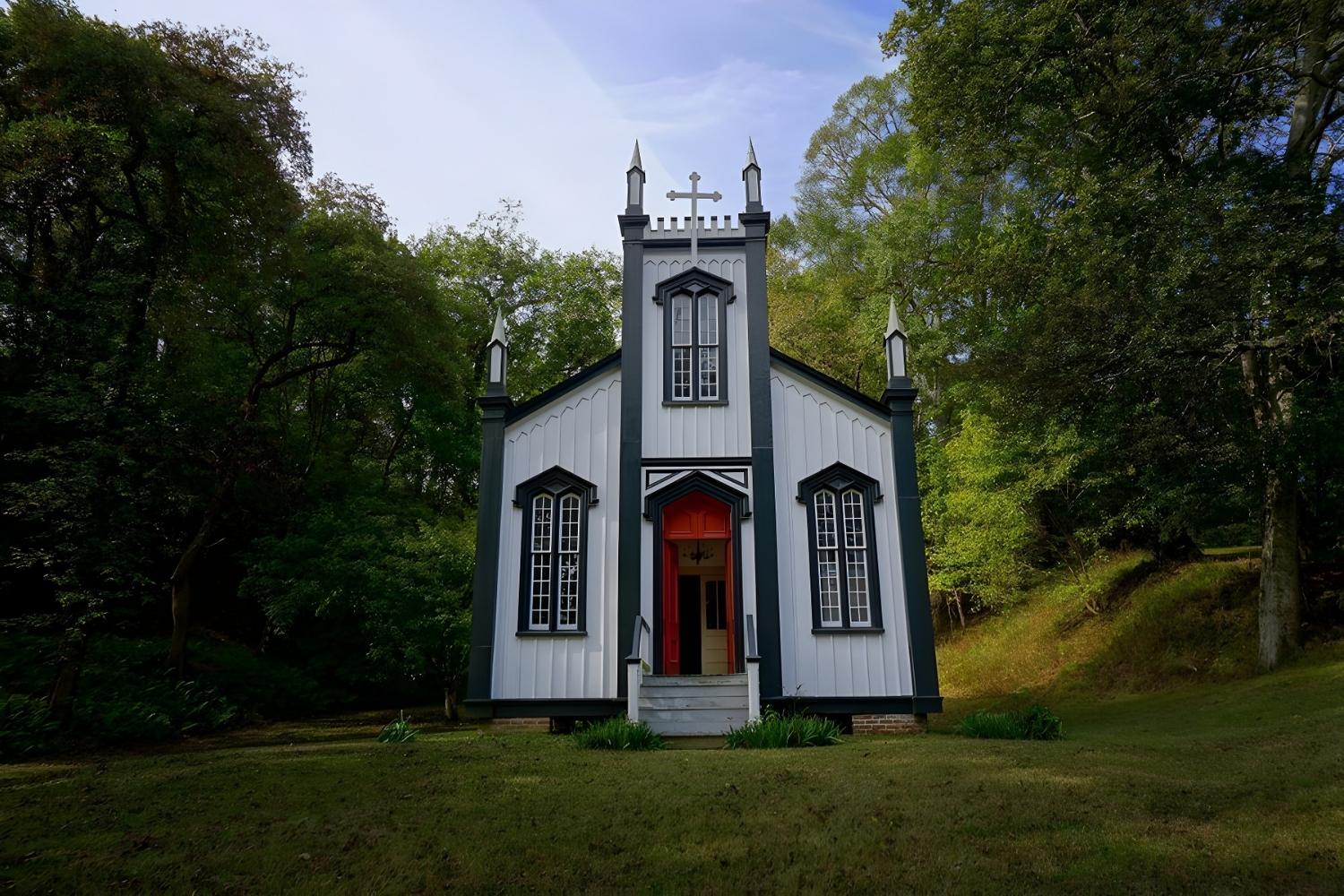Ghost Towns Of Mississippi’s Grand Gulf

Have you ever wondered what happened to the once-thriving Grand Gulf in Mississippi? This ghost town, now a hauntingly beautiful relic, was once a bustling port city along the Mississippi River. In the early 19th century, it was a key trading hub, filled with merchants, steamboats, and lively streets. However, a series of natural disasters, including a devastating tornado and severe flooding, led to its decline. Today, Grand Gulf stands as a testament to the past, with abandoned buildings and eerie silence replacing the once-bustling activity. Visiting this ghost town offers a unique glimpse into history, making it a must-see for history buffs and curious travelers alike.
Ghost Towns of Mississippi's Grand Gulf
Mississippi's Grand Gulf is a treasure trove of ghost towns, each with its own unique history and charm. These abandoned places offer a glimpse into the past, where once-thriving communities now stand silent. Let's explore some of the most intriguing ghost towns in this area.
1. Rodney
Rodney was once a bustling river port town, but now it's a ghost town with a few remaining structures. The town's decline began after the Mississippi River changed its course, leaving Rodney isolated.
- Rodney Presbyterian Church: This church, built in 1832, still stands and is a testament to the town's former prosperity.
- Old Rodney Cemetery: Wander through this cemetery to see gravestones dating back to the 1800s.
2. Grand Gulf
Grand Gulf itself is a ghost town with a rich history. It was an important port during the Civil War but was abandoned after a series of natural disasters.
- Grand Gulf Military Park: This park preserves the history of the town and includes a museum, historic buildings, and a cemetery.
- Ruins of the Grand Gulf Bank: Explore the remnants of this once-thriving bank, now just a shell of its former self.
3. Bruinsburg
Bruinsburg played a significant role during the Civil War as a landing site for Union troops. Today, it's a ghost town with little remaining of its past.
- Bruinsburg Landing Site: Visit the site where Union troops landed during the Vicksburg Campaign.
- Old Bruinsburg Road: Walk along this historic road that once connected Bruinsburg to the rest of the region.
4. Rocky Springs
Rocky Springs was once a thriving community but was abandoned due to a combination of yellow fever, poor crop yields, and erosion.
- Rocky Springs Methodist Church: This church, built in 1837, is one of the few remaining structures in the town.
- Rocky Springs Cemetery: Explore the cemetery to find gravestones from the town's early settlers.
5. Windsor Ruins
Windsor Ruins is not a town, but the remains of a grand plantation home that once stood in the area. The mansion was destroyed by fire in 1890, leaving only the columns standing.
- Windsor Columns: These towering columns are all that remain of the once-grand Windsor Mansion.
- Windsor Cemetery: Visit the nearby cemetery where members of the family who owned Windsor are buried.
6. Port Gibson
Port Gibson is not entirely abandoned, but it has many historic sites that give it a ghostly feel. It was spared during the Civil War because General Grant declared it "too beautiful to burn."
- Windsor Ruins: Although technically part of Port Gibson, these ruins are a must-see.
- First Presbyterian Church: Known for its unique gold hand pointing to heaven, this church is a historic landmark.
7. Natchez
Natchez is another town that isn't completely abandoned but has many historic sites that feel like stepping back in time. It was a major port city on the Mississippi River.
- Natchez National Cemetery: This cemetery is the final resting place for many Civil War soldiers.
- Longwood: An unfinished mansion that offers a glimpse into the past with its unique octagonal design.
8. Rodney's Sister Town, Bruinsburg
Bruinsburg, often overshadowed by Rodney, played a crucial role during the Civil War. It was the landing site for Union troops during the Vicksburg Campaign.
- Bruinsburg Landing Site: This historic site marks where Union troops landed to begin their campaign.
- Old Bruinsburg Road: Walk along this historic road that once connected Bruinsburg to the rest of the region.
9. Bayou Pierre
Bayou Pierre was a small community that thrived in the early 1800s but was eventually abandoned. Its history is closely tied to the river that shares its name.
- Bayou Pierre Church: This church is one of the few remaining structures from the town.
- Bayou Pierre Cemetery: Wander through this cemetery to see gravestones from the town's early residents.
10. Bruinsburg's Neighbor, Rodney
Rodney and Bruinsburg were once thriving communities but are now ghost towns. Rodney, in particular, has several notable sites worth visiting.
- Rodney Presbyterian Church: This church, built in 1832, still stands and is a testament to the town's former prosperity.
- Old Rodney Cemetery: Wander through this cemetery to see gravestones dating back to the 1800s.
The Timeless Allure of Grand Gulf
Grand Gulf's ghost towns offer a unique glimpse into Mississippi's rich history. Walking through these abandoned streets, you can almost hear the echoes of the past. The old buildings, now crumbling, tell stories of a once-thriving community. Exploring these sites, you gain a deeper appreciation for the resilience and spirit of those who lived here.
Visiting Grand Gulf isn't just about seeing old structures. It's about connecting with history on a personal level. Each corner turned reveals a new piece of the puzzle, making the experience both educational and emotional. Whether you're a history buff or just curious, Grand Gulf's ghost towns are a must-see.
So, pack your bags, grab a camera, and step back in time. The ghost towns of Grand Gulf await, ready to share their secrets with those willing to listen.

